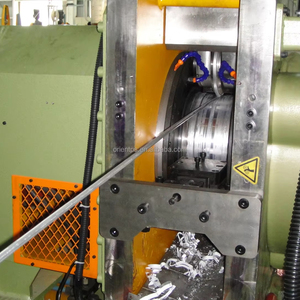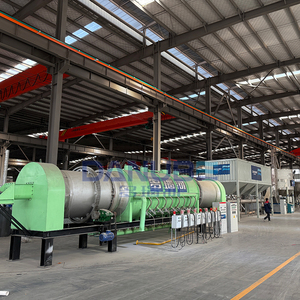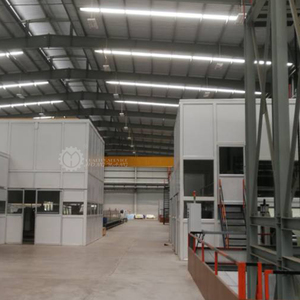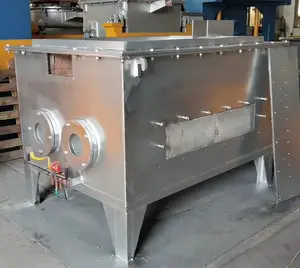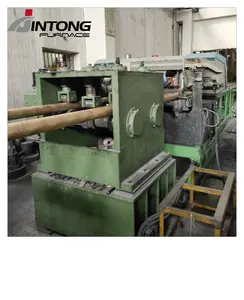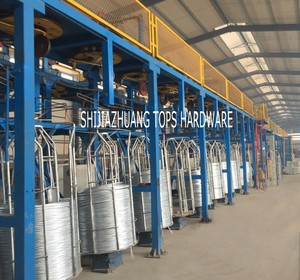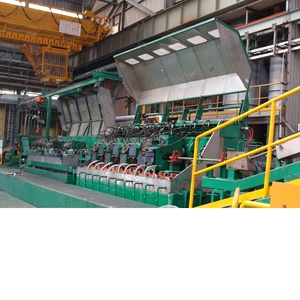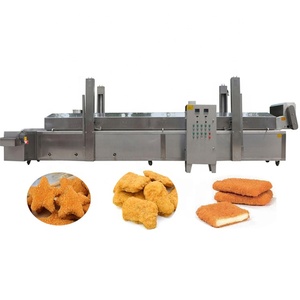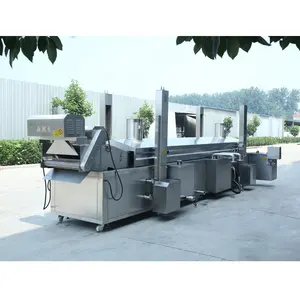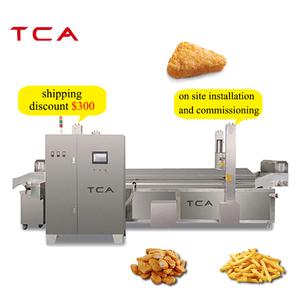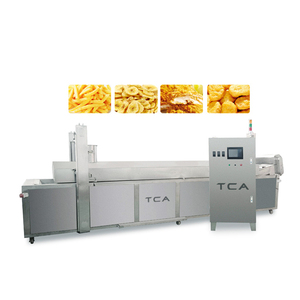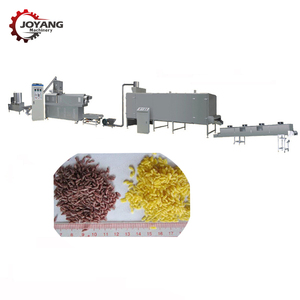Example Of Continuous Manufacturing





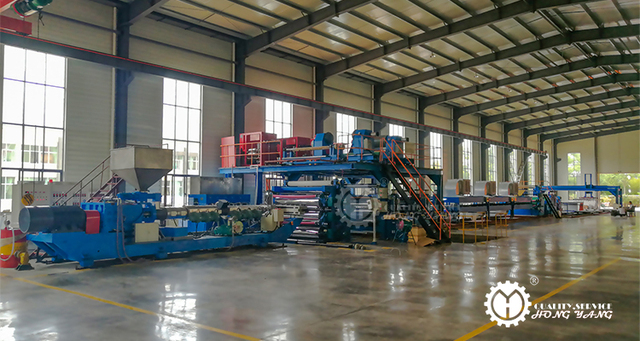



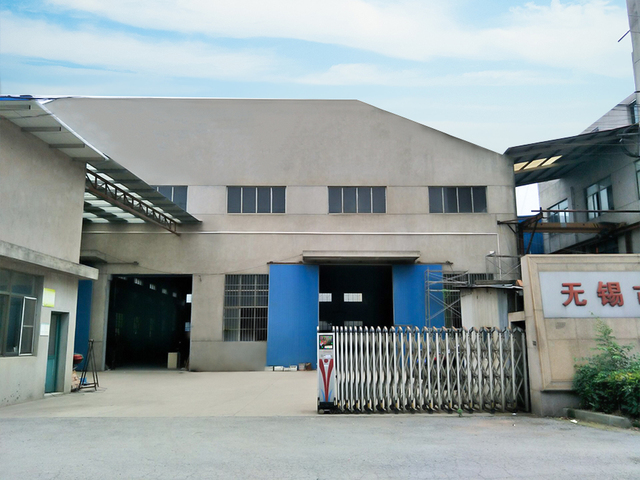



 1/23
1/23




 1/29
1/29










 1/21
1/21

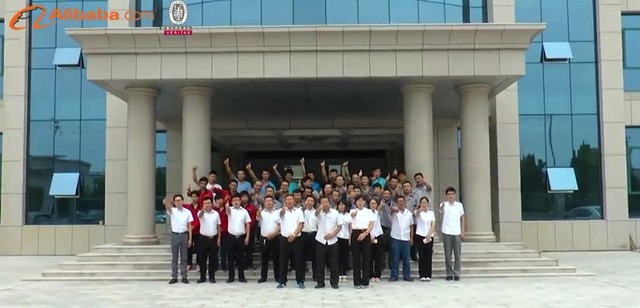



 1/16
1/16
About example of continuous manufacturing
Where to Find Continuous Manufacturing Equipment Suppliers?
China remains the central hub for continuous manufacturing equipment production, with specialized industrial clusters in Shandong, Hebei, and Beijing offering distinct technological and logistical advantages. Shandong’s Tangshan region excels in metallurgical machinery, hosting vertically integrated facilities that produce continuous casting and rolling lines with minimal external dependencies. Hebei and Beijing-based suppliers focus on advanced metal extrusion and recycling systems, leveraging proximity to raw material sources and R&D centers to deliver high-efficiency solutions.
These regional ecosystems enable streamlined production through co-located component suppliers and engineering talent pools. Buyers benefit from rapid prototyping capabilities, localized testing infrastructure, and optimized logistics networks—reducing lead times to 45–60 days for standard configurations. Cost efficiencies range from 20–35% compared to European or North American manufacturers due to lower labor costs and domestic access to steel, aluminum, and industrial automation components. The concentration of expertise also supports customization flexibility across sectors including road construction, biomass processing, and nonferrous metal recycling.
How to Choose Continuous Manufacturing Equipment Suppliers?
Selecting reliable partners requires a structured evaluation of technical, operational, and transactional indicators:
Technical Compliance & Certification
Confirm adherence to international quality standards such as ISO 9001 for quality management. For export markets, CE marking is essential for compliance with EU safety, health, and environmental requirements. Request documentation validating performance testing of critical subsystems—including PLC controls, thermal efficiency metrics, and structural integrity under continuous operation.
Production Capacity Verification
Assess supplier capability through key benchmarks:
- Minimum factory area of 5,000m² to support full-scale assembly lines
- In-house engineering teams capable of customizing control systems (e.g., Siemens PLC integration)
- Proven track record in delivering turnkey systems, including conveyors, heating units, and automated feeding mechanisms
Cross-reference claimed capacities with actual order fulfillment data, prioritizing suppliers reporting consistent on-time delivery rates above 97%.
Procurement Risk Mitigation
Utilize secure payment frameworks such as escrow services to align financial release with equipment verification at destination. Evaluate after-sales support readiness, including availability of remote diagnostics and spare parts inventory. Conduct sample testing where feasible—benchmark energy consumption, output consistency, and maintenance intervals before scaling procurement.
What Are the Leading Continuous Manufacturing Equipment Suppliers?
| Company Name | Location | Main Products | On-Time Delivery | Avg. Response | Reorder Rate | Price Range (USD) | Min. Order |
|---|---|---|---|---|---|---|---|
| Dezhou Feiteng Road Construction Equipment Co., Ltd. | Shandong, CN | Asphalt Mixers, Bitumen Melters, Boiler Parts | 100% | ≤1h | Not available | $32,300–64,600 | 1 set |
| DANUBE MACHINERY EQUIPMENT SINGAPORE PTE LTD | Singapore | Carbonization Furnaces, Drying Equipment, Briquette Machines | Not available | ≤4h / ≤6h | Not available | $8,000–128,000 | 1 set / 21,500 sets |
| Beijing Orient Pengsheng Tech. Co., Ltd. | Beijing, CN | Metal Casting Machinery, Cable Production Lines, Extrusion Presses | 100% | ≤9h | <15% | $125,000–350,000 | 1 set |
| Tangshan Fengrun District Runhao Rolling Machinery Co., Ltd. | Hebei, CN | Rolling Mills, Continuous Casting Machines, Industrial Furnaces | 100% | ≤5h | Not available | $2,600–30,000 | 1 set |
Performance Analysis
Dezhou Feiteng demonstrates strong responsiveness (≤1h average) and perfect on-time delivery, positioning it as a preferred partner for bitumen processing systems requiring tight project timelines. Beijing-based Orient Pengsheng offers high-value solutions for copper and aluminum extrusion but reports a low reorder rate (<15%), suggesting potential gaps in post-sale service or long-term reliability. Tangshan Runhao provides cost-effective entry-level casting and rolling lines with competitive pricing starting at $2,600 per set, ideal for small-to-mid scale steel producers. DANUBE MACHINERY stands out in biomass carbonization and drying technology, though higher MOQs (e.g., 21,500 sets) indicate targeting bulk industrial buyers rather than pilot operations.
FAQs
How to verify continuous manufacturing equipment supplier reliability?
Validate certifications through issuing bodies and request third-party audit reports covering design validation, material traceability, and QC procedures. Analyze customer feedback focusing on system uptime, ease of maintenance, and technical support responsiveness during commissioning.
What is the typical lead time for customized continuous manufacturing systems?
Standard orders require 45–60 days. Customized configurations involving PLC programming, unique material handling, or integration with existing plant infrastructure may extend to 75–90 days depending on complexity.
Can suppliers provide global shipping and installation support?
Yes, most established manufacturers offer FOB or CIF shipping terms and can coordinate container loading for sea freight. Some provide optional on-site installation supervision and operator training packages for an additional fee.
Do suppliers offer free samples or trial runs?
Full-system sampling is uncommon due to size and cost. However, suppliers may provide video demonstrations, lab test reports, or remote live operation sessions. Component-level samples (e.g., extruded profiles or carbonized output) are sometimes available upon request.
What customization options are typically available?
Buyers can specify input capacity, output dimensions, automation level (manual, semi-auto, fully automatic), control interface language, and power supply compatibility (380V/50Hz, 480V/60Hz). OEM branding and modular expansion readiness are also negotiable features.



















